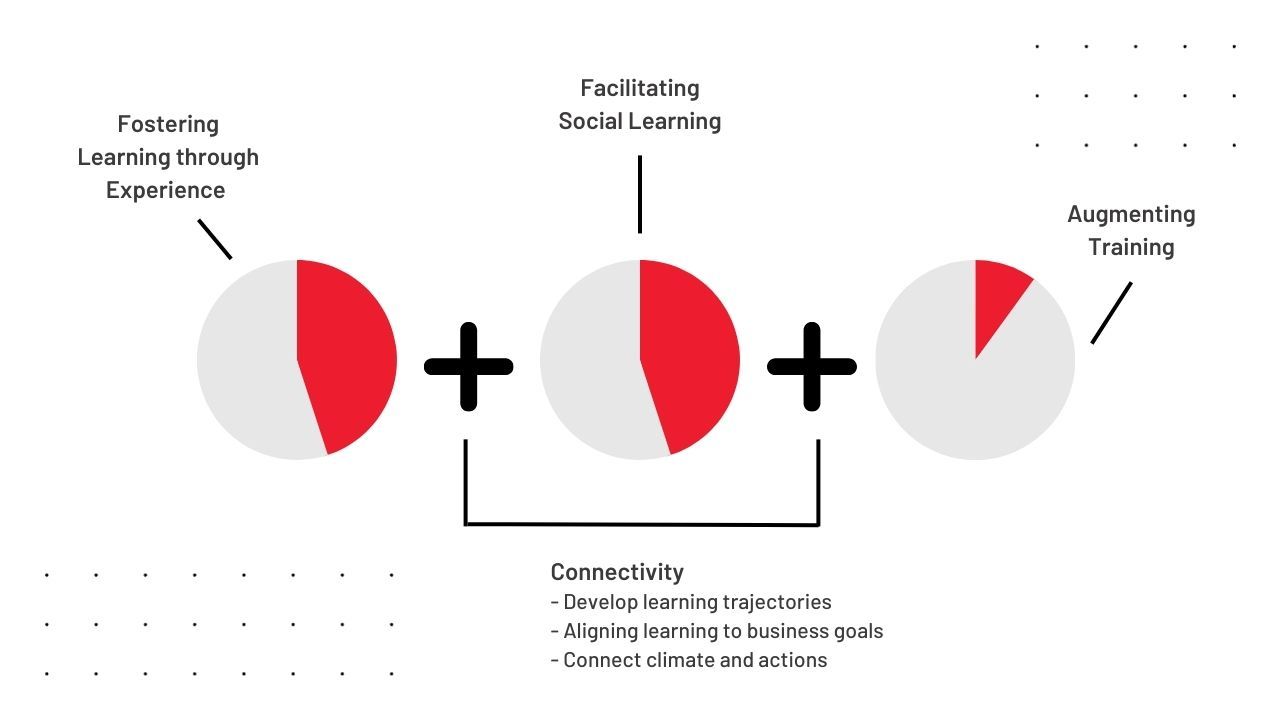
Training needs analysis
Ready to evolve your workforce? It all starts with understanding your employees’ learning and development needs.
To help determine your organisation’s training needs, Swinburne Edge offers three different training needs analysis solutions for your convenience.
Meet with our Senior Consultants
our workforce solutions Senior Consultants are available to discuss your needs, suggest fit-for-purpose solutions and provide you with a written proposal
this can be done by booking a Complimentary Meeting up to 60mins long
send us your expression of interest.
Applying data to Strategic Workforce Planning
In today's rapidly changing business landscape, companies that fail to adapt to shifting industry trends and workforce needs run the risk of becoming obsolete. To remain competitive in a fast-paced environment, businesses need to embrace agile, proactive management strategies, often through the implementation of digital technology and customised AI tools.
In response to this need, Swinburne Edge has introduced a training needs analysis approach that blends data driven insights with tailored business objectives, partnering with Faethm.
Book a meeting or send us your enquiry to find out more about our three-step approach to using data and Generative AI to determine your organisation’s future training needs.
Facilitated Training Needs Analysis Approach
Swinburne Edge offers a personalised seven phase training needs analysis approach, designed to guide your business through a holistic training needs analysis process. Much of the consultation will occur during the first three phases.
You’ll find each phase listed below:
- identify and articulate the organisational outcomes you expect from your training and development
- ensure that the training and development goals correspond to your overall business objectives
- address the key question: how will you know that the training has worked?
- consult with relevant stakeholders, if appropriate.
- identify your desired critical competencies: behaviours and associated knowledge, skills, abilities and personal characteristics
- link these competencies to your desired organisational outcomes.
- evaluate each critical competency
- determine if each one is something you expect employees to possess prior to job entry, or if it is something your workforce needs to develop
- create a list of competencies to target.
- determine the extent to which your organisations’ employees possess the targeted competences
- assess using competency evaluations, tests, assessments, or review of performance appraisals.
- combine individual employee results to assess how many employees need improvement and development with respect to competencies
- establish what constitutes a performance gap, and what constitutes acceptable standards of competency demonstration
- understand how many employees fall above or below that standard and create a clearer picture of the size and scope of the training and development programs.
- identify how many, or what percentage, of the organisation or team needs the training and development
- consider the importance of each competency
- develop a list of training priorities.
- discover how to best train and develop your workforce to overcome performance gaps and achieve the required competency standards.
The exact form, outcomes, content and duration of the learning and development programs depend on the findings and results of the first six phases.
That said, it is likely that the programs will provide for a mix of delivery methods, timeframes, and options for formal recognition (i.e. qualifications).
Enquire to find out more about our facilitated seven-step approach to guiding your organisation through the training needs analysis process to ensure the understanding of your workforce and maximise your return on investment.
Learning models
Finding the right social learning model for your business allows us to frame custom solutions in a way that is easily implementable into your business structure. Read below to explore current and future learning models that Swinburne Edge employs to determine the best training needs analysis approach for your business needs.
At the core of our approach is the 45+45+10 learning model developed by Swinburne Edge’s own Professor Eva Kyndt, based on more than 15 years of research in the field of Learning and Development.
The new 45+45+10 learning model is an enhanced and evidence-based alternative to the 70-20-10 model. Using this model can:
- match the current (and future) reality of work
- inform and guide effective learning
- connect individual and organisational learning challenges.
This new method of learning and development maximises:
- effective learning
- transfer or learning
- return on investment.
Two insights underpin this model:
- Social learning is much more prevalent and important than traditionally recognised, however, proportions of learning activities differ across industries and jobs.
- Establishing connectivity is crucial, as ad-hoc learning activities are not effective.

Overview 45+45+10 Learning Model (Kyndt, 2023)
The infographic in full text format:
45+45+10 Learning model: Call to actions
- Fostering learning through experience: Establish a positive learning climate and enact leadership for learning
- Facilitating Social learning: Intentionally stimulate social learning through targeted actions and supports
- Augmenting training: Align training and work processes, through the design of learning trajectories that include pre- and post-training care and opportunities.
You may be familiar with the 70+20+10 professional development model, conceived by Lombardo and Eichinger from the Centre for Creative Leadership (CCL).
This method of learning and development program design maximises:
participant concentration
retention
enjoyment
impact
application of learning principles.

The 70+20+10 model.
The infographic in full text format:
The 70-20-10 Professional Development Model is a Venn diagram that includes:
- 70% learning via experience: how people need to BE in their work environment in order to be at their best 'behaviours'
- 20% learning via others: what people need to be able to DO in order to be at their best 'skills'
- 10% formal learning: what people need to KNOW in order to be at their best 'knowledge'.
Enquire to learn more about how these learning models could boost your organisational operations and employee engagement levels.
-

Meet our consultants
Get to know our team of consultants providing learning and education solutions for organisations.

